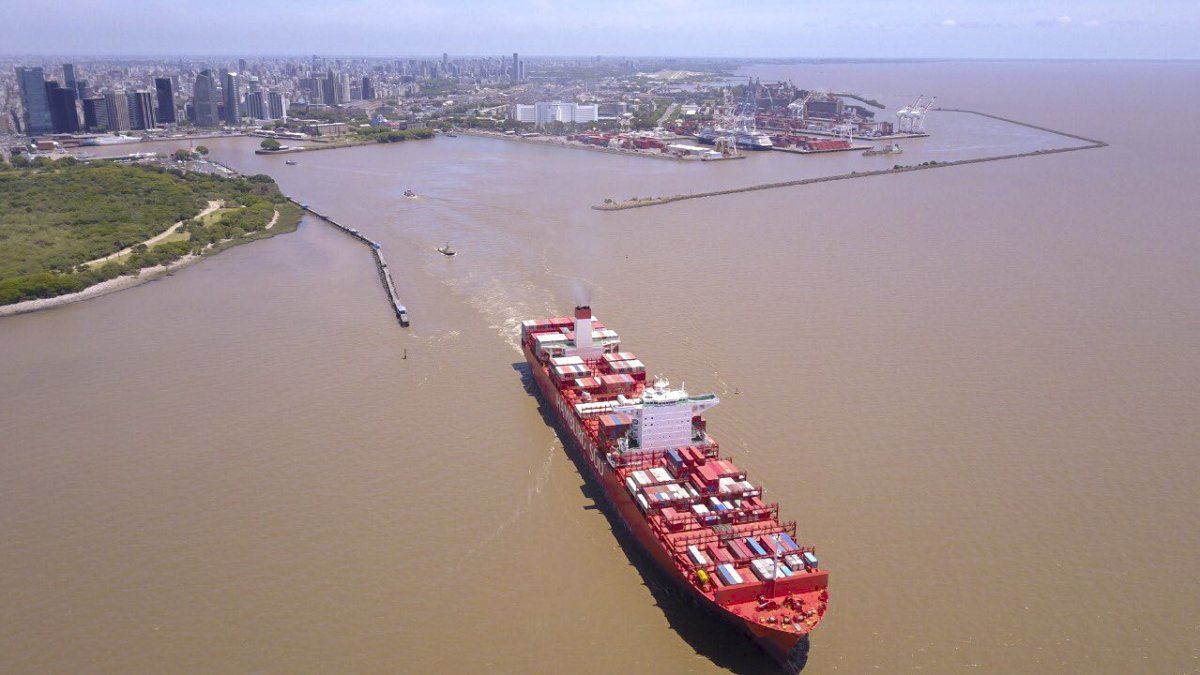After the devaluation of last December 13, the trade balance last month recorded the highest positive balance of the year, when registering US$1,018 million, The National Institute of Statistics and Censuses (INDEC) reported this Thursday, data much better than expected by analysts. Despite this, it closed 2023 with a significant deficit of US$6,926 million.
In December, December exports totaled 5,273 million dollars, with a year-on-year decrease of 13.8%, and imports totaled 4,255 million dollars, which represented a drop of 15.2%. Last February was the other month of 2023 with a trade surplus.
The positive balance in December, together with the surplus in February, were the only two months of 2023 in which the result did not result in a deficit for the country.
Trade balance 2023
The negative balance recorded last year was main trigger droughtwhich impacted the exports of primary products and manufactures from the agricultural sector, with falls of 16.9% and 25.1% compared to the previous period.
The final result of 2023 was the product of exports for US$66,788 million, with a decrease compared to 2022 of 24.5% in billing, compared to imports for US$73,714 million, which meant a decline of 9.6%.
A recent report prepared by the Central Bank stated that the projection of the commercial exchange of goods will be “increasingly surplus for Argentina in the coming years starting from an expected balance of US$22.4 billion for 2024 until reaching a surplus close to US$41.8 billion in 2030.”
The monetary entity highlighted that “exports of crude oil of unconventional origin” of the Vaca Muerta deposit, “will have great performance in the coming years” which will give impetus, along with sales from the agroindustrial sector to achieve these positive results.
The new transportation infrastructure (gas and oil pipelines) “will contribute to substituting imports and deploying export potential,” the BCRA projected.
More precisely, the BCRA highlighted that Total fuel exports “will go from US$10.4 billion this year to US$36.7 billion in 2030.”
Beyond the projections, the truth is that during the past year, the Argentine exports were led by Manufactures of Agricultural Origin (MOA), with US$23,825 million; and by Manufactures of Industrial Origin (MOI), with US$20,655 million, which explained 35.7% and 30.9% of total sales.
They were followed in importance by Primary Products (PP), with US$14,430 million and 21.6% of the total; and Fuel and Energy (CyE), which accumulated 11.8% of shipments abroad with US$ 7,878 million.
The indec considered that the three most important export products were flour and pellets from soybean oil extraction, with 12.0% participation; grain corn, excluded for sowing, which accounted for 9.3% of total shipments; and motor vehicles for transporting goods, equivalent to 6.9% of the total.
As far as markets are concerned, Brazil was the main destination of exports with 17.8% of the total; followed by the United States and China, with 8.5% and 7.9% of Argentine shipments abroad, respectively.
If 2022 international prices had prevailed, the deficit would have been US$4,299 million because the Import Value Index fell 5.8%, while the Export Value Index fell 9.7%.
In this way, the country registered a loss in the terms of trade of US$3,052 million.
In the twelve months of 2023, the commercial exchange -exports less imports- of the main products derived from soybeans and their by-products left a positive balance of US$7,882 million, in front of the US$13,903 million to those registered in 2022, which meant a drop of 63.8% in the interannual comparison, essentially explained by the effects of the drought on the production of the agricultural sector.
Meanwhile, the automotive sector recorded a deficit of US$3,370 million, higher than the red of US$2,845 million in 2022.
Source: Ambito




